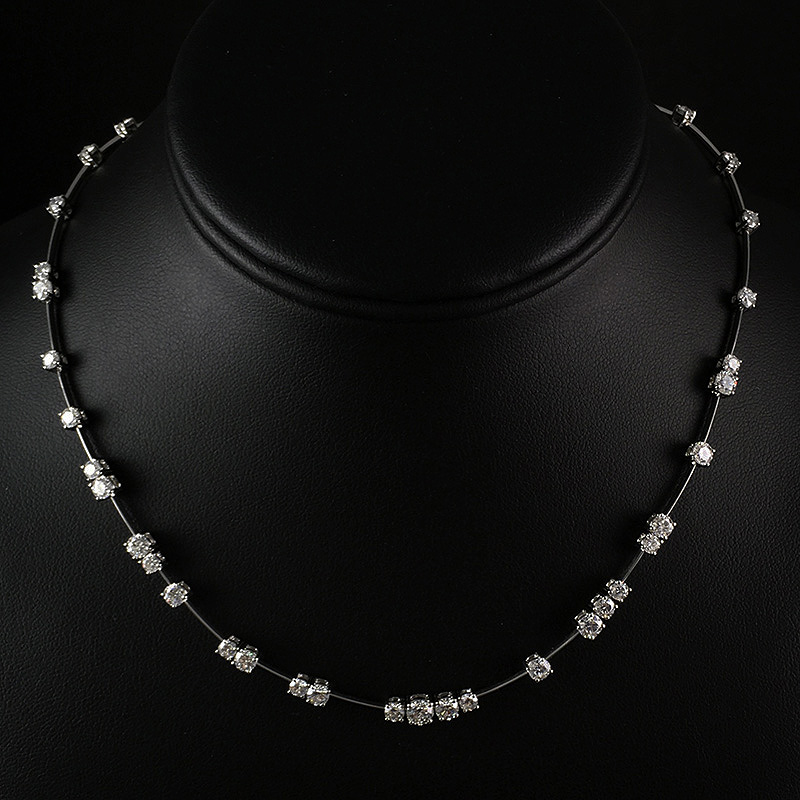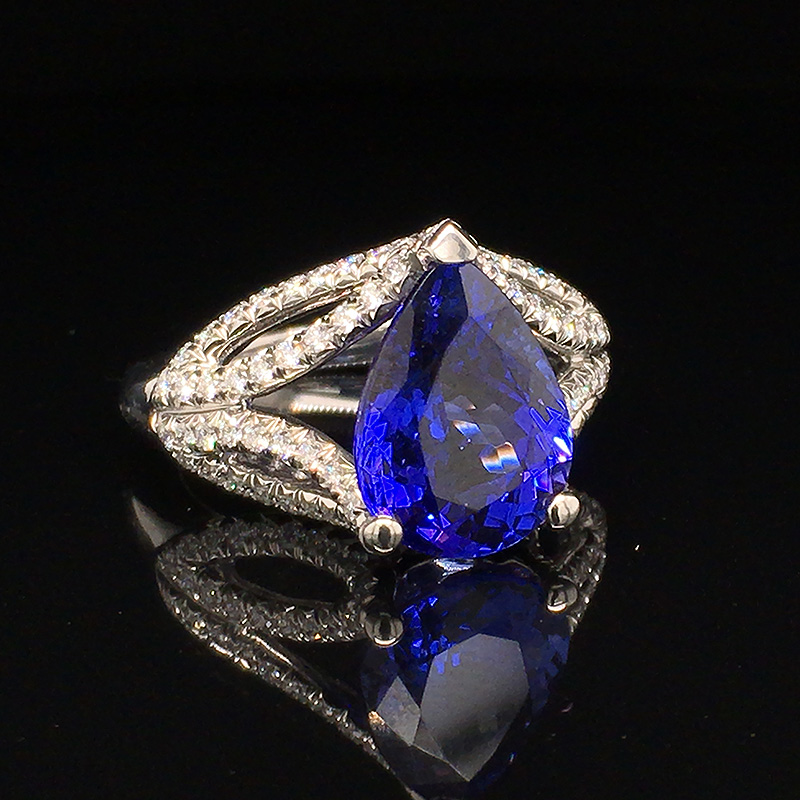The story of Suna Bros started with Kenneth Suna in 1925 in Poland. After apprenticing in a jewelry factory in Warsaw, Kenneth came to the United States. Several years after arriving in the U.S., Kenneth launched Suna, specializing in channel set wedding bands. He stopped the business when World War II started and relaunched it with his brother Joel, after the war ended. In 1974 Aron Suna, president Suna Bros Inc. in New York City and Kenneth’s son joined the business. Aron never planned to come into the jewelry business instead he attended law school and was a Navy JAG (Judge Advocate General Corps) for four years. Just before Aron left the navy, Kenneth was diagnosed with cancer. Aron went to visit his dad in the hospital and that’s when his father asked him to join the family business. After two days of soul searching, Aron agreed to come into the business. He then spent 3 months in Antwerp, Belgium where he learned to polish and sort diamonds. Today, Aron, with his brother Jonathan, continues taking the business, which makes all of its jewelry in its in-house New York City workshop, in new directions adapting to changing times and shifting customer desires, which in recent years has meant a foray into colored gemstones.
What inspires your designs?
We are very, very classic. We like new and different concepts, we do an updated classic with a slightly different twist. We go through cycles. In the early 1990s I went to Vicenza, Italy. That was when gold was inexpensive and before Italian gold had really entered the U.S. market. We bought Italian gold and made 18-karat gold necklaces and bracelets with no stones. That was very different for us. We were always creating diamond pieces with rubies, sapphires and the occasional aquamarine. In the past ten years we started to work with more exotic color — spinel, moonstone, Paraiba tourmaline. We have a new gemologist who opened our eyes to the breadth of color.
What criteria do you use to select your gemstones?
We’re fussy about our color. We want the finest colored gemstones that we can find. It has to be high quality. We’re not a price point house, but we do want something that is well priced, has depth of color and brilliance, that is well cut and has no windows.
What is the most unusual gemstone that you have ever used in a design?
The nicest was a padparadscha sapphire layout that I found in Geneva. It was really special. The stones were all 2 to 3-carat ovals and there were about 30 of them. Each stone had a GIA (Gemological Institute of America) report. I didn’t know what to do with them, but when I got the stones back to New York, we came up with the idea for a floral bib necklace. It has different size flowers with padparadscha sapphires at the center of each one. We used Argyle pink diamonds and yellow diamonds, platinum and 18-karat yellow gold. It took hundreds of hours to make, it’s truly a work of art.
What are the characteristics of a well-made piece of jewelry?

When I’m showing a piece of jewelry, I always like it when someone turns it over and looks at the back first. It shows that a person knows that a piece of jewelry has to be constructed properly. When we use rose gold, we use 20-karat because it has less porosity than lower karat gold and we want no porosity. You should hear a clasp click when it closes and there should be nothing that catches on clothes. You should be able to run a piece of jewelry over a silk blouse without snagging anything. It has to look right and flow well. Depending upon the design, an item can be delicate or chunky, but it needs to be proportional. When we make a necklace we use a neck form, this way we know it flows correctly, it has to flow with the body. Each piece has a unique serial number stamped inside of it. We keep meticulous records so that we know where the stones are from and who the jeweler was that made the piece in our shop. That way if a piece comes back to us to be refurbished we can give it back to the same setter. Each setter has a slightly different hand. A lot of little details go into making a fine piece of jewelry.
What should a person look for when buying a piece of jewelry?
I always say buy quality – 18-karat gold or platinum. How is the piece made? Does the ring fit right? Make sure that a necklace sits right on the collarbone and doesn’t flip. The quality of the stones is important, cut affects the appearance of diamonds and colored gemstones. The most important thing is that the jewel has to appeal to you.
All of the jewelry showcased in this blog can be found on the Jewelers Circle.
Featured image (top of page): Padparadascha sapphires, yellow diamonds, Argyle pink diamonds, platinum and 18-karat yellow gold, necklace, all images courtesy Suna Bros.
Authored by Amber Michelle

